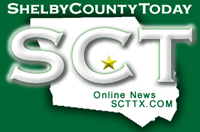
December 2, 2024 - Timpson Area Genealogy and heritage Society was honored to be addressed at their November 20 meeting by Cecil Whitton, who shared his hobby of metal detecting.
Mr. Whitton, father of TAGHS ‘ own Zoey Whitton, is a Timpson High School graduate. He was married to the former Kay Rhodes. Mr. Whitton shared a bit of the history of metal detectors, explaining briefly how they work and how they have evolved since the first one he owned. The first metal detector he owned was from Radio Shak, but he had put a better model on layaway, paying for it over time .One morning he came home from his night shift job to find the metal detector on his pillow. Kay who had already departed for her job as a teacher, had paid it out of layaway for him. On display were other models owned by Mr. Whitton through the years
Alexander Graham Bell first devised a metal detecting device to locate the bullet that had been fired at President James Garfield. In 1925 Mel Fisher made a handheld metal detecting device. The military then used metal detectors on land to find hidden land mines. The devices have evolved until ;they can differentiate between copper, silver and gold. They can also give the depth of the detected metal and can eliminate iron.
Although Mr. Whitton has made some moderately valuable finds during the course of his hobby, he stress the pursuit of monetarily valuable relics should not be its goal. Rather , metal detecting should be a hobby that brings joy to a person. Some of the greatest joy he has experienced was being able to restore 3 wedding rings to their owners. One ring was for Jimmy Rogers and another was for Mr. Whitton’s nephew, Michael Raines, who lost his ring in the hayfield. The third was for Charles Moore, who lost his ring in a goat pen. /When found it was underneath ten inches of manure and dirt.
In addition to the many relics on display, Mr. Whitton shared pictures of many more. Most of these finds were within a few blocks of the library. He has researched meticulously the history of each of these objects and shared their historical significance with his audience.
The first item displayed was a Tony Llama Over Sixty Years token. Tony Llama began producing boots in 1913. A 1941 Australian penny the size of a half dollars, was discovered in Mr. Whitton’s next door neighbor’s yard. He shared various token of commemoration and others used in payment of goods and services. One token, used to pay Louisiana luxury tax, was worth one dollar. A 1905 nickel was red when he found it. A three inch disk was a unit of weight used in selling goods. Other disks would have been available in different weights Mr. Whitton found toys made of an alloy. Including a soldier with a gun, probably from the 1940s, which still retained some original blue paint. Various coins were on display, including some of the more than 100 Mr. Whitton has found in his own yard. A British coin and 10 Centavos Spanish coin were on view. More tokens for various services were also brought by Mr. Whitton. One of these, for a free shave in St. Louis MO, had to be freed from concrete by dissolving the concrete with lemon juice. Also in the collection was a Civilian Conservation Corps buckle. Mr. Whitton has also found tags for dogs, with one dating back to 1932. A very interesting find he shared was a Rural Free Deliver brass postal lock found near the railroad tracks. A metal tag used on a car license plate, advertising the Walter E. Allen dealership in Oklahoma City, OK was another of Mr. Whitton’s finds. He showed a 1936 Roosevelt-Garner token lucky piece, Heads You Win, Tails You Lose. Mr. Whitton has also found numerous pocket knives. Some of their styles are believed to have been pre Civil War.
In closing, Mr. Whitton cited a code of ethics for metal detecting enthusiasts. Always make sure you have the property owner’s permission to search. Fill in any holes dug, and leave no trash behind. Again, he stressed enjoying the hobby for itself instead of seeking a big treasure.









